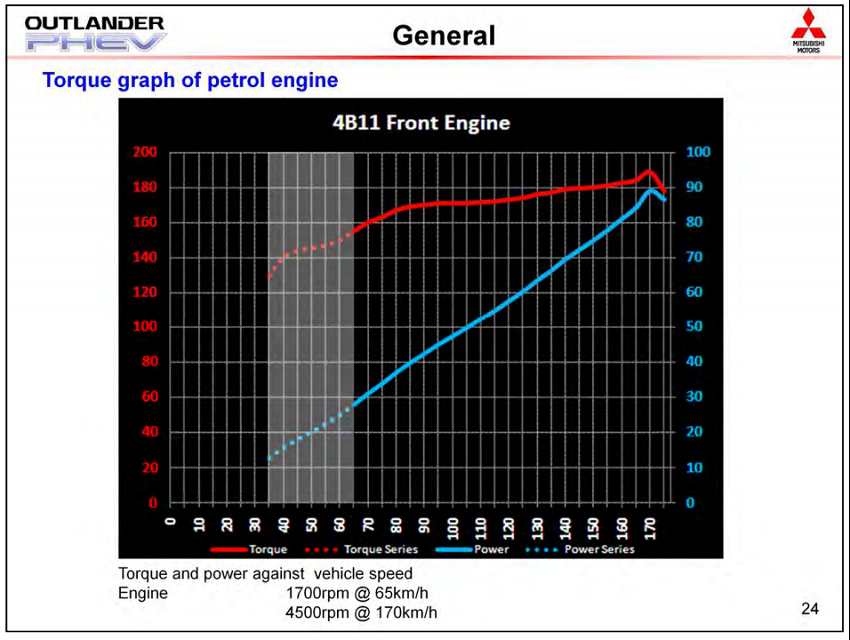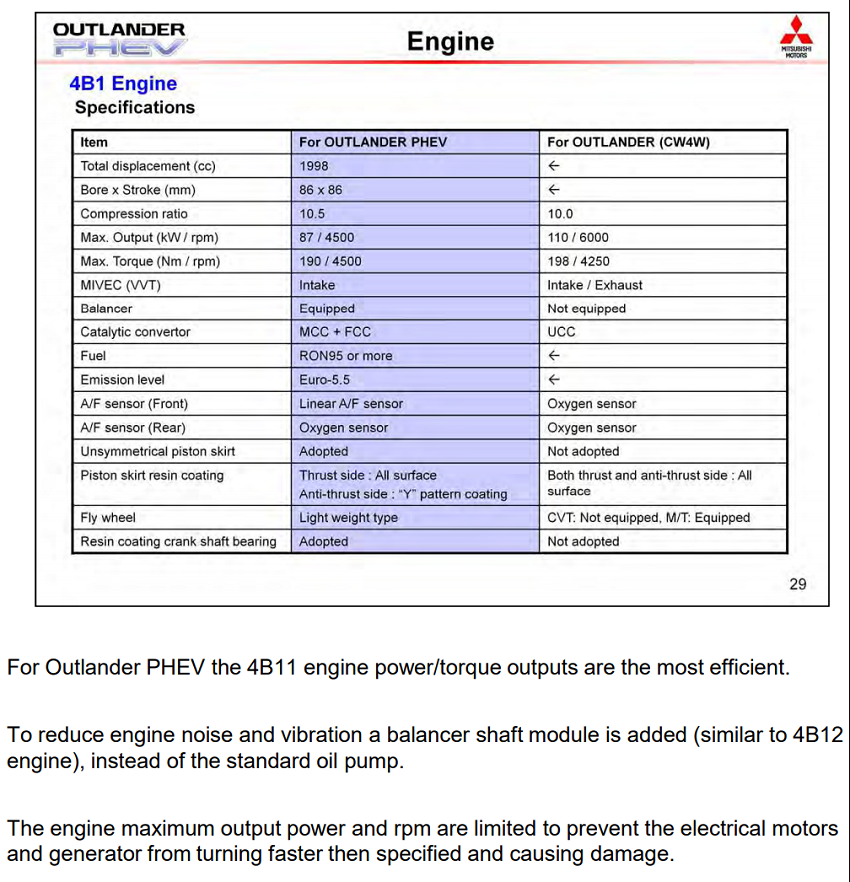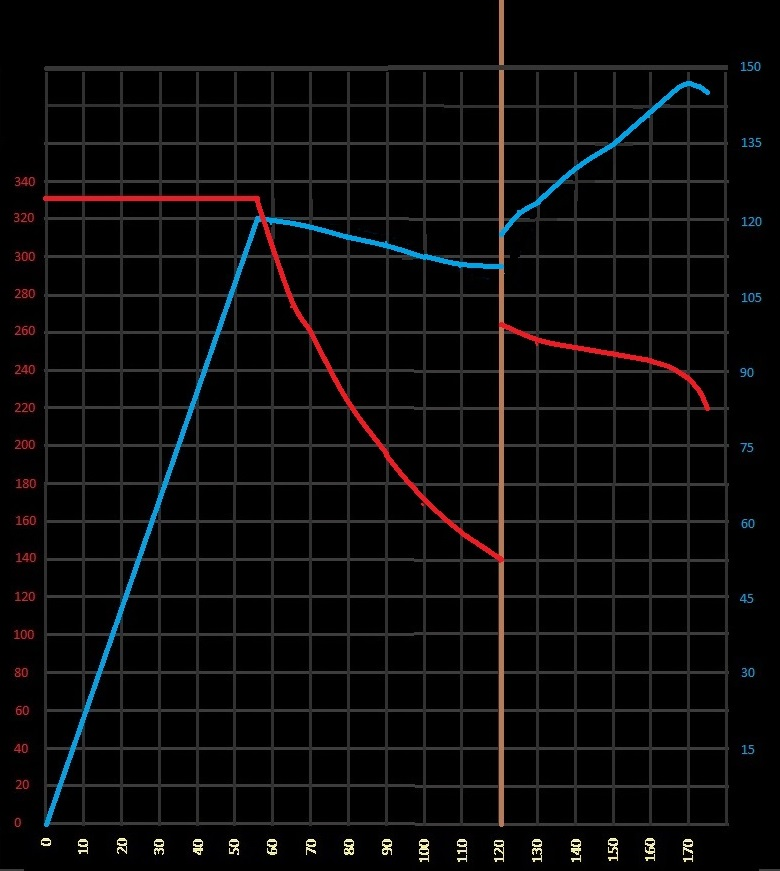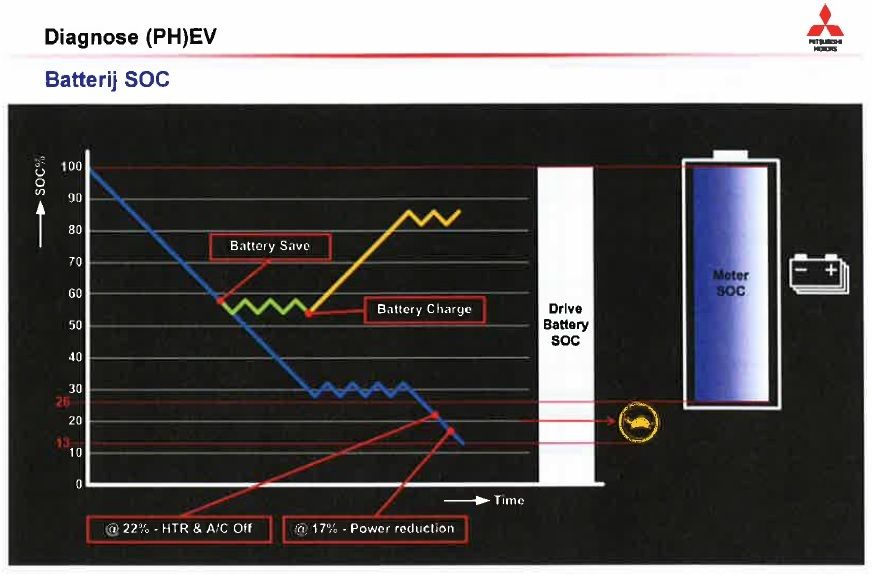Trex
Well-known member

Here we have our petrol motor's torque and power plots.
From about 120kph and up the PHEV will go into Parallel mode from Series mode regardless because there is more power available from the petrol motor if it is directly coupled to front wheels than getting the power through the generator in Series mode. Below about 120kph, down to 65kph, if more power and is needed from the petrol motor than it can produce in Parallel mode (if already in Parallel mode) it will drop back into Series mode. You can see the effect in this video:
https://www.youtube.com/watch?v=rbOmtzFj14M
Watch center display between power gauge and speedo gauge and see how it goes from Series mode into Parallel mode at about 120kph.
Of course his foot is flat to the floor on the accelerator. :lol:
Regards Trex.
Material from MMC and GtoGarrett on youtube.








































